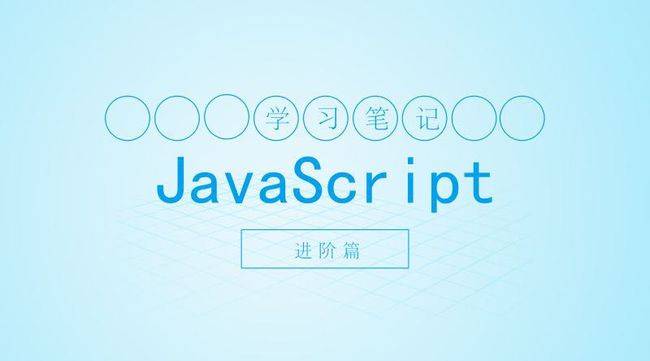JavaScript专题之跟着underscore学防抖
前言
在前端开发中会遇到一些频繁的事件触发,比如:
- window 的 resize、scroll
- mousedown、mousemove
- keyup、keydown
……
为此,我们举个示例代码来了解事件如何频繁的触发:
我们写个 index.html 文件:
debounce
debounce.js 文件的代码如下:
var count = 1;
var container = document.getElementById('container');
function getUserAction() {
container.innerHTML = count++;
};
container.onmousemove = getUserAction;
从左边滑到右边就触发了 165 次 getUserAction 函数!
因为这个例子很简单,所以浏览器完全反应的过来,可是如果是复杂的回调函数或是 ajax 请求呢?假设 1 秒触发了 60 次,每个回调就必须在 1000 / 60 = 16.67ms 内完成,否则就会有卡顿出现。
为了解决这个问题,一般有两种解决方案:
- debounce 防抖
- throttle 节流
防抖
今天重点讲讲防抖的实现。
防抖的原理就是:你尽管触发事件,但是我一定在事件触发 n 秒后才执行,如果你在一个事件触发的 n 秒内又触发了这个事件,那我就以新的事件的时间为准,n 秒后才执行,总之,就是要等你触发完事件 n 秒内不再触发事件,我才执行,真是任性呐!
第一版
根据这段表述,我们可以写第一版的代码:
// 第一版
function debounce(func, wait) {
var timeout;
return function () {
clearTimeout(timeout)
timeout = setTimeout(func, wait);
}
}
如果我们要使用它,以最一开始的例子为例:
container.onmousemove = debounce(getUserAction, 1000);
现在随你怎么移动,反正你移动完 1000ms 内不再触发,我才执行事件。看看使用效果:
顿时就从 165 次降低成了 1 次!
棒棒哒,我们接着完善它。
this
如果我们在 getUserAction 函数中 console.log(this),在不使用 debounce 函数的时候,this 的值为:
但是如果使用我们的 debounce 函数,this 就会指向 Window 对象!
所以我们需要将 this 指向正确的对象。
我们修改下代码:
// 第二版
function debounce(func, wait) {
var timeout;
return function () {
var context = this;
clearTimeout(timeout)
timeout = setTimeout(function(){
func.apply(context)
}, wait);
}
}
现在 this 已经可以正确指向了。让我们看下个问题:
event 对象
JavaScript 在事件处理函数中会提供事件对象 event,我们修改下 getUserAction 函数:
function getUserAction(e) {
console.log(e);
container.innerHTML = count++;
};
如果我们不使用 debouce 函数,这里会打印 MouseEvent 对象,如图所示:
MouseEvent
但是在我们实现的 debounce 函数中,却只会打印 undefined!
所以我们再修改一下代码:
// 第三版
function debounce(func, wait) {
var timeout;
return function () {
var context = this;
var args = arguments;
clearTimeout(timeout)
timeout = setTimeout(function(){
func.apply(context, args)
}, wait);
}
}
到此为止,我们修复了两个小问题:
- this 指向
- event 对象
立刻执行
这个时候,代码已经很是完善了,但是为了让这个函数更加完善,我们接下来思考一个新的需求。
这个需求就是:
我不希望非要等到事件停止触发后才执行,我希望立刻执行函数,然后等到停止触发 n 秒后,才可以重新触发执行。
想想这个需求也是很有道理的嘛,那我们加个 immediate 参数判断是否是立刻执行。
// 第四版
function debounce(func, wait, immediate) {
var timeout;
return function () {
var context = this;
var args = arguments;
if (timeout) clearTimeout(timeout);
if (immediate) {
// 如果已经执行过,不再执行
var callNow = !timeout;
timeout = setTimeout(function(){
timeout = null;
}, wait)
if (callNow) func.apply(context, args)
}
else {
timeout = setTimeout(function(){
func.apply(context, args)
}, wait);
}
}
}
返回值
此时注意一点,就是 getUserAction 函数可能是有返回值的,所以我们也要返回函数的执行结果,但是当 immediate 为 false 的时候,因为使用了 setTimeout ,我们将 func.apply(context, args) 的返回值赋给变量,最后再 return 的时候,值将会一直是 undefined,所以我们只在 immediate 为 true 的时候返回函数的执行结果。
// 第五版
function debounce(func, wait, immediate) {
var timeout, result;
return function () {
var context = this;
var args = arguments;
if (timeout) clearTimeout(timeout);
if (immediate) {
// 如果已经执行过,不再执行
var callNow = !timeout;
timeout = setTimeout(function(){
timeout = null;
}, wait)
if (callNow) result = func.apply(context, args)
}
else {
timeout = setTimeout(function(){
func.apply(context, args)
}, wait);
}
return result;
}
}
取消
最后我们再思考一个小需求,我希望能取消 debounce 函数,比如说我 debounce 的时间间隔是 10 秒钟,immediate 为 true,这样的话,我只有等 10 秒后才能重新触发事件,现在我希望有一个按钮,点击后,取消防抖,这样我再去触发,就可以又立刻执行啦,是不是很开心?
为了这个需求,我们写最后一版的代码:
// 第六版
function debounce(func, wait, immediate) {
var timeout, result;
var debounced = function () {
var context = this;
var args = arguments;
if (timeout) clearTimeout(timeout);
if (immediate) {
// 如果已经执行过,不再执行
var callNow = !timeout;
timeout = setTimeout(function(){
timeout = null;
}, wait)
if (callNow) result = func.apply(context, args)
}
else {
timeout = setTimeout(function(){
func.apply(context, args)
}, wait);
}
return result;
};
debounced.cancel = function() {
clearTimeout(timeout);
timeout = null;
};
return debounced;
}
那么该如何使用这个 cancel 函数呢?依然是以上面的 demo 为例:
var count = 1;
var container = document.getElementById('container');
function getUserAction(e) {
container.innerHTML = count++;
};
var setUseAction = debounce(getUserAction, 10000, true);
container.onmousemove = setUseAction;
document.getElementById("button").addEventListener('click', function(){
setUseAction.cancel();
})
至此我们已经完整实现了一个 underscore 中的 debounce 函数,恭喜,撒花!




